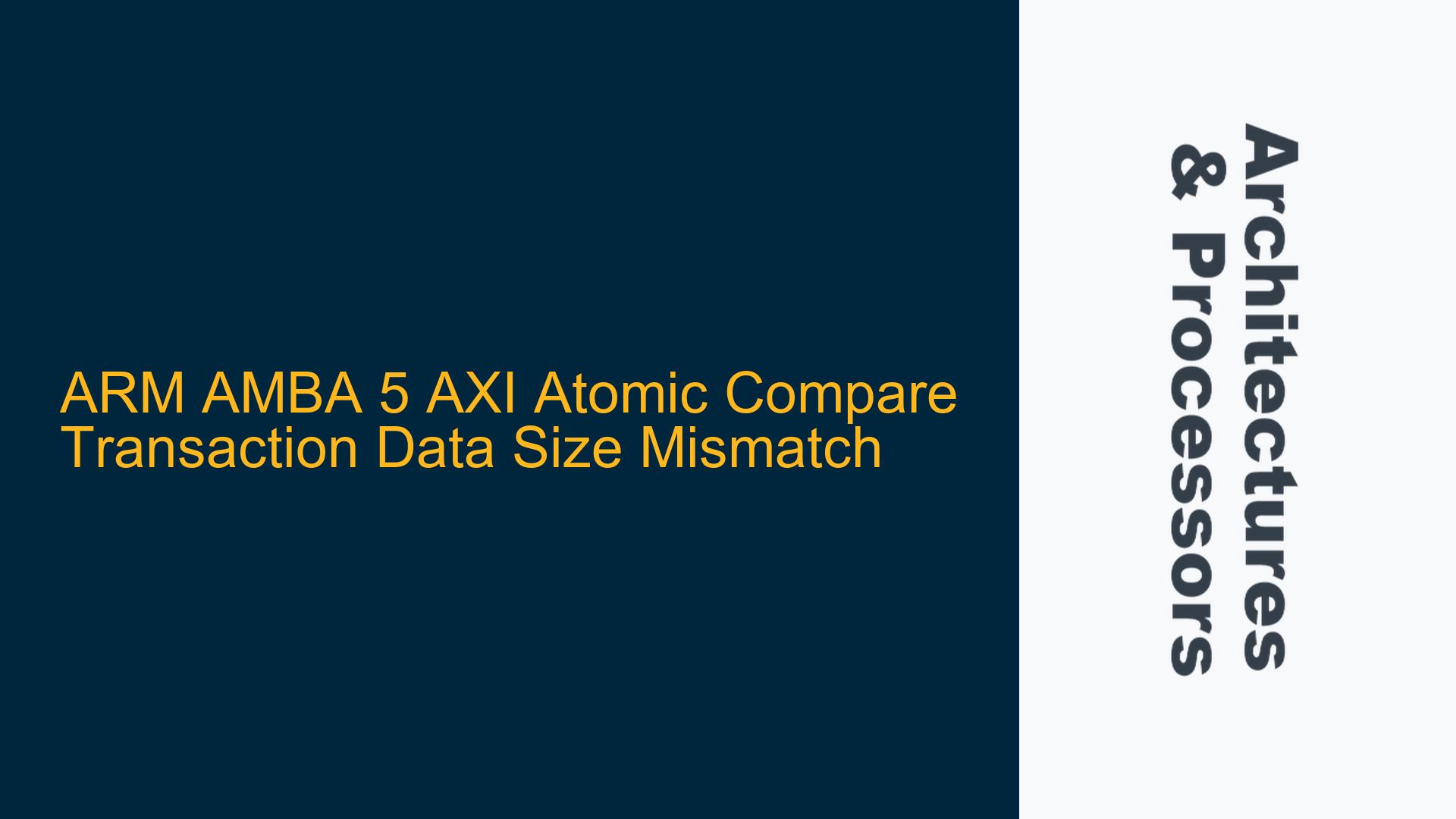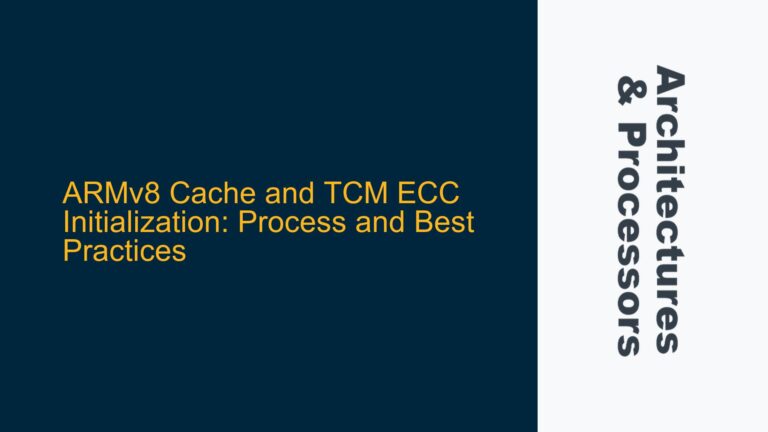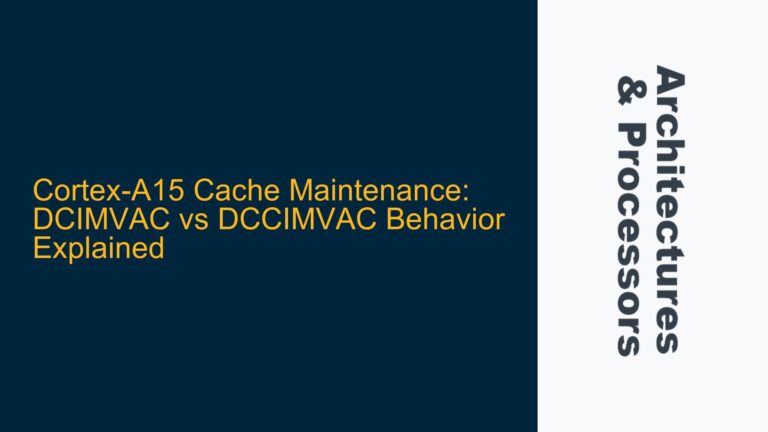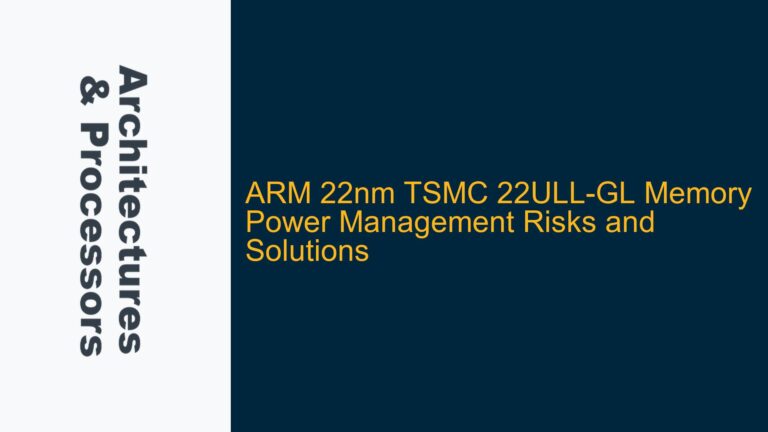ARM AMBA 5 AXI Atomic Compare Transaction Data Size Mismatch
Atomic Compare Operation in AMBA 5 AXI Protocol
The ARM AMBA 5 AXI protocol introduces advanced features for high-performance systems, one of which is the Atomic Compare operation. This operation is designed to facilitate atomic memory transactions, ensuring that specific memory locations can be compared and updated in a single, indivisible operation. The Atomic Compare operation is particularly useful in multi-core systems where multiple processors or agents might attempt to access and modify the same memory location simultaneously. The operation ensures data integrity by allowing a compare-and-swap mechanism, where a memory location is only updated if it matches a specified compare value.
In the context of the AMBA 5 AXI protocol, the Atomic Compare operation involves sending both a compare value and a swap value to the memory system. The compare value is used to check the current contents of the memory location, while the swap value is used to update the memory location if the compare operation is successful. The protocol specifies that the total amount of data sent during an Atomic Compare operation is described by the AWLEN (Address Write Length) and AWSIZE (Address Write Size) signals. These signals determine the number of data transfers and the size of each transfer, respectively.
However, a critical aspect of the Atomic Compare operation is the handling of the read data returned by the memory system. The read data represents the original value stored in the memory location before any potential update. This value is essential for verifying whether the compare operation was successful and for ensuring that the system can react appropriately based on the original data. The AMBA 5 AXI protocol specifies that the size of the read data returned by an Atomic Compare operation is half the size of the outbound write data. This is because the outbound write data includes both the compare and swap values, whereas the inbound read data only includes the original data value.
Memory System Behavior and Data Transfer Size Mismatch
The behavior of the memory system during an Atomic Compare operation is governed by the AMBA 5 AXI protocol specifications. When an Atomic Compare operation is initiated, the memory system receives both the compare and swap values as part of the outbound write data. The size of this outbound data is determined by the AWLEN and AWSIZE signals. For example, if the AWLEN signal specifies a length of 4 and the AWSIZE signal specifies a size of 8 bytes, the total outbound write data would be 32 bytes (4 transfers x 8 bytes per transfer).
However, the read data returned by the memory system is only half the size of the outbound write data. This is because the read data only includes the original value stored in the memory location, whereas the outbound write data includes both the compare and swap values. In the example above, the read data returned by the memory system would be 16 bytes (half of 32 bytes). This behavior is explicitly described in Section A7.4.1 of the AMBA 5 AXI protocol specification, which states that the inbound data size is half of the outbound data size due to the inclusion of both compare and swap values in the outbound data.
The mismatch between the outbound write data size and the inbound read data size can lead to confusion, especially for developers who are not familiar with the intricacies of the AMBA 5 AXI protocol. This is particularly true in systems where the AWLEN signal specifies a length greater than 1, as the number of read data transfers will be half that specified by AWLEN. For example, if AWLEN is set to 4, the number of read data transfers will be 2. This behavior is consistent with the protocol’s design, which aims to optimize data transfer efficiency by minimizing the amount of data that needs to be returned during an Atomic Compare operation.
Protocol Specification and Implementation Considerations
The AMBA 5 AXI protocol specification provides detailed guidelines for implementing Atomic Compare operations, including the handling of data transfer sizes. Section A7.4.1 of the specification explicitly states that the inbound data size is half of the outbound data size because the outbound data contains both compare and swap values, whereas the inbound data has only the original data value. This design choice is intended to reduce the amount of data that needs to be transferred during an Atomic Compare operation, thereby improving overall system performance.
Developers implementing Atomic Compare operations in their systems must carefully consider the implications of this data size mismatch. Specifically, they must ensure that their memory controllers and data handling logic are designed to accommodate the reduced size of the inbound read data. This may involve modifying the memory controller to handle the reduced number of read data transfers or adjusting the data handling logic to correctly interpret the returned data.
Additionally, developers must be aware of the potential impact of this data size mismatch on system performance. While the reduction in inbound data size can improve performance by reducing the amount of data that needs to be transferred, it can also introduce complexities in the data handling logic. For example, if the memory controller is not designed to handle the reduced number of read data transfers, it may incorrectly interpret the returned data, leading to errors in the system.
In conclusion, the AMBA 5 AXI protocol’s handling of Atomic Compare operations involves a deliberate design choice to reduce the size of the inbound read data by half. This design choice is intended to optimize data transfer efficiency but requires careful consideration during system implementation to ensure correct operation and optimal performance. Developers must carefully review the protocol specifications and ensure that their memory controllers and data handling






